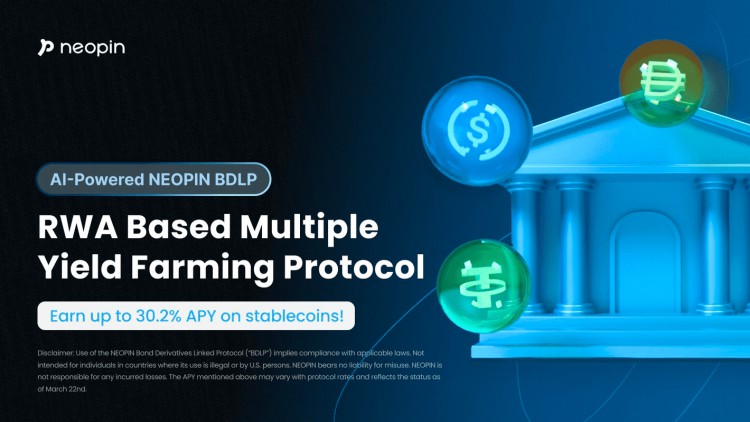After the adoption of the Bitcoin spot ETF, the barriers for traditional financial institutions to enter the crypto market have been further reduced, and the entire market has entered a bull market with enhanced liquidity; and RWA is the next new trend with the same effect and greater capital participation.
Current status of RWA track
On March 21, BlackRock launched its first tokenized fund issued on a public blockchain, the BlackRock USD Institutional Digital Liquidity Fund (BUIDL). After this news was announced, the entire RWA track ushered in a concentrated outbreak this week. The leading token Ondo broke a record high, and mainstream RWA concept coins such as POLYX, TOKEN, GFI, and RIO all increased by more than 30%.
At present, the overall market value of the RWA track is close to 8 billion U.S. dollars, and the top five projects have all entered the top 200 in market value. Ondo has a market value of 1.27 billion U.S. dollars and has entered the 100th. After the old project MANTRA entered RWA, its market value doubled in the past month and ranked 156th. Therefore, under the current background of deterministic value-added space, if you want to participate in RWA, you need to look for more cost-effective low-market value and high-potential projects. South Korea's DeFi infrastructure Neopin is a target worthy of attention.
Neopin integrates RWA
Neopin updated its roadmap a few days ago and plans to launch the RWA product NEOPIN BDLP on March 28. The protocol runs on the Ethereum network, and its smart contracts are connected to various DeFi protocols such as Spark.fi, Ethena.fi, and Curve.fi. , based on MakerDAO short-term U.S. government bonds, synthetic U.S. dollar USDe issued by Ethena Labs, and Curve-collateralized sDAI, users can earn up to 30.2% APY by depositing DAI, USDT, and USDC.

In addition, Neopin also has specialized AI algorithm analysis to provide each user with the best asset management ratio. Users can efficiently utilize complex DeFi derivatives based on their own preferences and on-chain data.
According to the official website documentation, Neopin’s RWA product provides two revenue models:
RWA: Using the Spark protocol, it currently offers 15% APY, no waiting period for withdrawals, and partial withdrawals are allowed;
Boost: Using the Ethena protocol, it currently provides about 30.2% APY, the withdrawal waiting period is 14 days, and only full withdrawals are allowed;
Although the Boost mode offers a relatively high APY, it is not very flexible due to the 14-day waiting period required to withdraw assets. On the other hand, the RWA model allows immediate withdrawals but offers a relatively low annual interest rate, which users can flexibly choose according to their needs.
Neopin other advantages
The current price of Neopin’s native token NPT is US$1.17, an increase of 54% in the 7th day. Presumably, when Neopin’s RWA product is officially launched, NPT’s price performance will reach a higher level. In addition, from the perspective of market value, the entire RWA track has not yet exceeded the US$10 billion mark, and there is a lot of room for development. And Neopin has just emerged on the RWA track, and is at the same starting line as many projects, with huge potential.

South Korea is currently becoming a hot spot for the cryptocurrency market. Neopin is already a well-known DeFi project in South Korea and will serve as the event sponsor for ETH Seoul at the end of the month and host a three-day hackathon. Therefore, there is no need to worry about its market opening. What is even more valuable is that Neopin still has great ambitions. Its CEO Ethan Kim said: "NEOPIN is committed to becoming the number one DeFi protocol in the Asian market this year and becoming a global DeFi protocol in the next three years. Top ten in agreement.”
In order to realize this vision, entering the RWA market is a key step for Neopin. As a DeFi protocol, before Neopin chose RWA, leading DeFi protocols including MakerDAO, Pendle, and Maple Finance had already entered RWA, thus giving these DeFi protocols more stable yields and sustained liquidity. After Neopin is connected, it will also enjoy the advantages that RWA brings to DeFi, bringing users more composable DeFi products and new asset classes, and capturing value from larger and more stable traditional financial markets.
In addition, a major feature of Neopin is regulatory coordination. As a non-custodial permissioned (Permissioned) DeFi protocol, Neopin has strict KYC/AML oracle security guidelines, which is crucial for RWA integration. Can enhance legal clarity and investor confidence.
Looking to the future
According to a Galaxy report, the private credit market size will be approximately US$1.4 trillion in 2023, with managed capital reaching US$350 billion, and is expected to grow to US$2.3 trillion in 2027. Conservative estimates suggest that the size of the RWA asset market may reach US$3.5 trillion, and will reach US$10 trillion by 2030. As one of the core narratives of the future, only a small part of the entire market has been discovered so far.
As for the future potential of Neopin, we can get a glimpse of it from Pendle, which has also been involved in RWA before to capture this core narrative. In August last year, Pendle announced the integration of two RWA protocols, namely sDAI under Maker DAO and fUSDC under Flux Finance. Subsequently, its currency price rose all the way under the support of multiple narratives, reaching a record high this month.
As a local DeFi protocol in South Korea, Neopin is expected to follow the path of Pendle in the process of listing on mainstream exchanges such as Upbit and radiating to the Asian market, and gain multiple benefits with the help of the power of RWA narrative.
